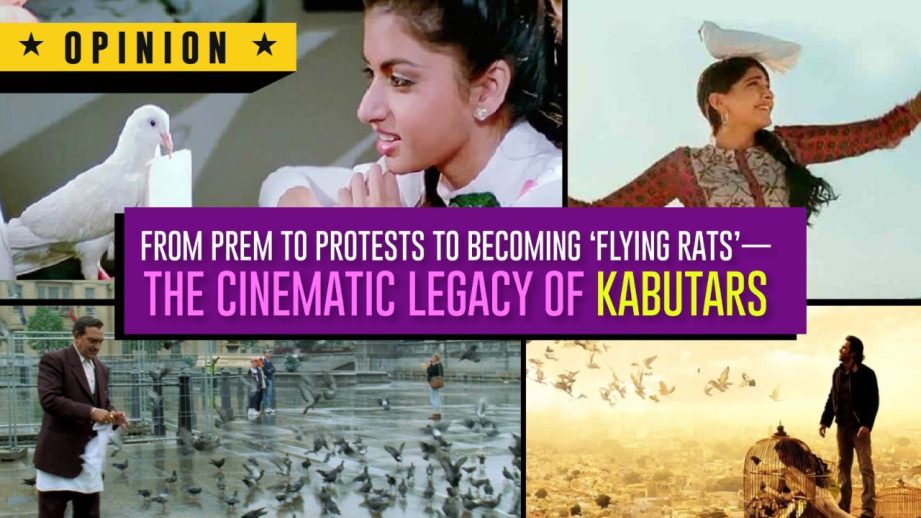
If you grew up watching Bollywood, chances are your first memory of a pigeon isn’t from a park or your balcony, but from a movie screen. Time and again, filmmakers have opened scenes with kabutars taking flight in front of the Gateway of India, a now-iconic visual shorthand for Mumbai itself. Not being a Mumbaikar myself, the flutter of pigeons across the city skyline always felt like a perfect metaphor for the city’s energy, chaotic, constant, and strangely poetic. But perhaps nothing captured their place in our pop culture imagination more than the moment Bhagyashree leaned in to whisper into a pigeon’s ear in Maine Pyar Kiya, asking it to carry a love note to Salman Khan. Kabutar ja ja ja, she sang—and an entire generation believed pigeons were the original winged messengers of romance.
Today, however, Mumbai’s pigeons are at the centre of a very different kind of scene, one with police, protests, and court rulings. A recent civic ban on feeding pigeons in public spaces has sparked outrage among religious feeders, bird lovers, and activists. In a city where kabutarkhanas, devoted feeding spaces for pigeons have existed for decades, this move has knocked many as both abrupt and callous. Authorities argue it’s a public health necessity: pigeon droppings, after all, are known to carry pathogens that can cause serious lung diseases, and cases have been reported from Delhi and Mumbai alike.
And while these health concerns are real, the backlash stresses how deeply snarled these birds are into India’s—and especially Bollywood’s—cultural fabric. It’s hard to forget Mithun Chakraborty grooving to Gutur Gutur in Dalaal, pigeons fluttering in rhythm to the beat. Or Jackie Shroff in Dil Hi Toh Hai, singing Chhat Ke Uppar Do Kabutar, literally giving life to the song’s title through two well-placed birds. Even recent films haven’t let go of the pigeon obsession—Sonam Kapoor’s carefree Masakali dance in Delhi 6 wouldn’t be the same without that feisty kabootar perched on her head, practically stealing the scene.
And who can ignore Teen Kabootar from Lucknow Central—a track that, while cheeky, proves that pigeons are far from passé in modern cinema. These birds have symbolised love, freedom, chaos, and sometimes even comedy in Indian storytelling. So when authorities ban their feeding and start dismantling traditional kabutarkhanas, it feels like a cultural loss, not just a sanitary measure.
That said, finding a middle ground may be the only way forward. Animal welfare groups like PETA India suggest staggered feeding times and controlled zones to keep hygiene intact while still honouring the emotional bond many have with the birds. Perhaps it’s time to reexamine our cities, not by barring life out, but by inventing shared spaces that accommodate both people and the pigeons they grew up watching on screen.
After all, for a generation raised on Kabutar Ja Ja Ja, this sort of hits somewhere unknown.
